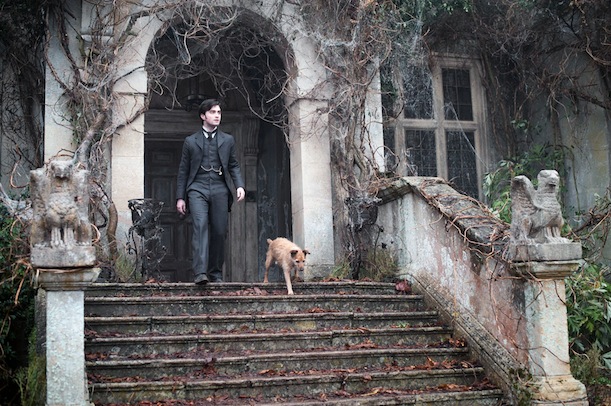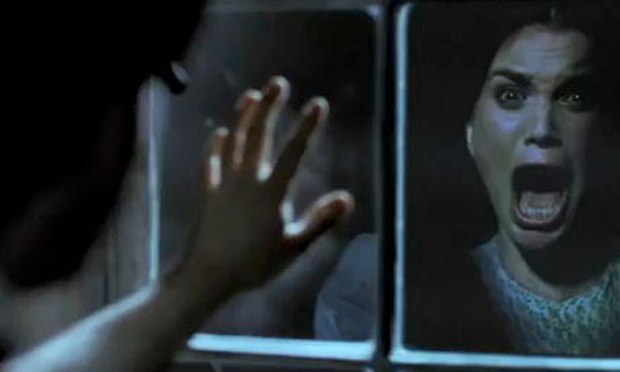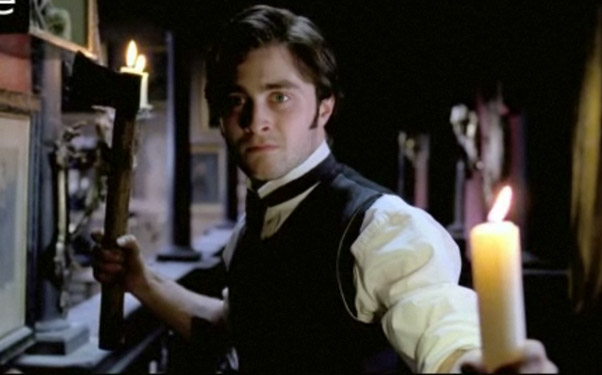The Woman in Black Review
Horror films always seem to take place in the present, which is understandable, considering one decade or century isn’t necessarily scarier than the next (in the traditional sense of fear). It also costs more money to dress up a film in a particular era. So if it weren’t actually scary or interesting, “The Woman in Black” would at least be commended on its early 20th Century setting and expert set decoration.
“Harry Potter” star Daniel Radcliffe turns out to be pretty non-essential to this resurgent horror effort from Britain’s Hammer Films, unless you count the spotlight he brings to it. His character, Arthur Kipps, serves only as a means to explore the mystery of the Woman in Black.
Rather than riding the trend of supernatural planes and paranormal occurrences, “The Woman in Black” is a tried and true ghost story. Arthur Kipps is single father who lost his wife during childbirth. The trauma has leaked to his professional life, and so to prove himself to his employer he must train out to the country and settle the affairs of Eel Marsh House. As it turns out, “settle the affairs” means something completely different.
Very little of the history/mystery of Eel Marsh House is given to us through expository dialogue, which is quite refreshing for a horror film. Perhaps it’s because writer Jane Goldman (“X-Men: First Class,” “Kick-Ass”) is over-qualified for the gig of adapting Susan Hill’s novel. Ciarán Hinds’ character, essentially the only man to welcome Arthur with open arms, could have been a convenient excuse to explain that Eel Marsh House is haunted, but instead, our own knowledge that this is in fact a horror film is all we need to mount the tension and start to draw conclusions about what’s going on in this small town.
As such, “The Woman in Black” builds slowly and quietly, creating a pesky suspense more terrifying than any of the jump scares. The countless times Arthur goes up and down the stairs and out the door and back inside Eel Marsh or slowly walks into new rooms where he previously saw a ghost is maddening and even frustrating, yet it’s far from boring. Director James Watkins uses the hauntingly gorgeous set decoration to create even more suspense.
The nursery where a traumatic event occurred in the house featuring all kinds of wind-up toys is an incredible and creepy sight. Watkins will focus in on the beaded eyes of dolls which look like they are watching Arthur because the candle light reflects in them as he moves. In general, the period decor is thick and rich, and Watkins wields it to his advantage.
The movement throughout the house also moves the plot along. When Arthur sees something he goes to explore the room, as if the Woman in Black wants him to discover her story. Arthur is also alone at this point, so there’s no needless dialogue to summarize what he’s uncovered. In fact, large portions of the film are completely silent other than the swelling horror music.
While any actor could have played Arthur, Radcliffe does well in the role. It’s implied given the script does not include any scenes of him trying to flee, but he doesn’t have any exaggerated scenes of being afraid or freaking out; he’s actually a rather refreshing horror protagonist. Most of the time the person goes into some room because it’s a horror movie, but here you actually believe Arthur would go in the room because he’s not dumb and has proven to be a bit more brazen than most.
There aren’t any shocking twists or reveals in “The Woman in Black,” but the very slow and calm approach to the mystery allows the conclusion to be riveting anyway. Any viewer with decent observation skills will start to put the pieces together fairly quickly on who the Woman in Black is and why she’s haunting people. Instead, it’s what her feelings are toward Arthur and what will ultimately become of him that are slightly ambiguous.
The ending is one of those shockers that ends suddenly, like in a Sam Raimi horror film. It’s not impossible to predict, but part of it is rather unexpected; it’s superior than most neatly tied-up horror endings.
In fact, “The Woman in Black” is superior to most horror offerings, though certainly the period setting and the subtlety of the story rank as its best features.
4/5 Stars
The Woman in Black
Directed by James Watkins
Written by Jane Goldman, Susan Hill (novel)
Starring: Daniel Radcliffe, Ciarán Hinds, Janet McTeer







1 Comment
awesome